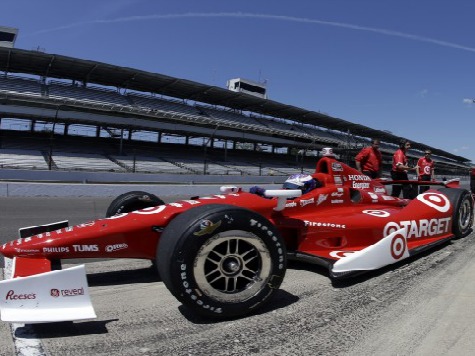(AP) Rules changes may help IndyCar drivers break marks
By MICHAEL MAROT
AP Sports Writer
INDIANAPOLIS
IndyCar officials may be about to give the series a retro look and bring back the chase for track records at Indianapolis Motor Speedway.
Hulman & Co. CEO Mark Miles and Derrick Walker, the new head of IndyCar competition, emerged from a competition advisory board meeting Thursday to announce they were debating how to top the record-breaking speeds clocked in 1996 by two-time Indy 500 winner Arie Luyendyk.
Carpenter, the only owner-driver in the series, grew up around the track as the stepson of IndyCar founder and former speedway executive Tony George.
The goal is simple: Break Luyendyk’s records for fastest official lap at Indianapolis (237.498 mph) and fastest four-lap qualifying average (236.986). After series officials changed the specs to disallow turbo-charged engines in 1997, nobody has come close. Last season, after bringing back the turbochargers with less horsepower than drivers had in the early to mid-1990s, Indy’s pole-winning speed was 226.484 mph. Speeds were up a bit this year as Carpenter captured his first pole at 228.762.
Some believe steady improvements will continue to push speeds up by 2 mph to 3 mph over the next few years, putting drivers within reach of the record without adding any more boost to the engines, something series officials could do right now if they wanted.
But that’s not how Walker wants to proceed. First, committee members hope to modify the aerodynamic kits. Walker said that decision needs to be made soon because manufacturers will then get one year to develop the kits and get them on the track.
There are concerns, though.
Safety is a priority for Miles and Walker, too.
As the news conference took place inside the speedway museum, the two men stood in front of the first car to top 150 mph, the first car to top 200 mph and Luyendyk’s car that set the record and the SAFER barrier that has become a standard practice in IndyCar and Cup racing.
But the ultimate goal is rekindling the talk about how fast drivers can go on Indy’s world famous 2.5-mile oval.
Increasing speeds might not be the only thing changing in America’s top open-wheel series.
When asked about the two-engine chase for supremacy between Chevrolet and Honda and with only one chassis manufacturer in the series, Dallara, Walker acknowledged he would welcome more competition while pledging to find new ways to make drivers safe.
It’s a combination that could change the whole look of a series that hopes to expand its fan base and improve its television ratings.
Drivers can’t wait to get started.

COMMENTS
Please let us know if you're having issues with commenting.